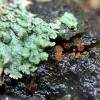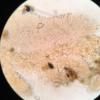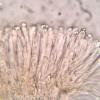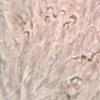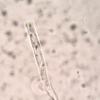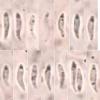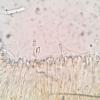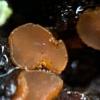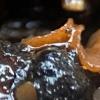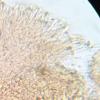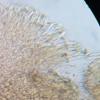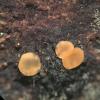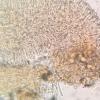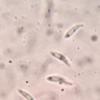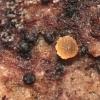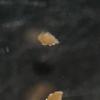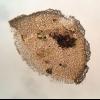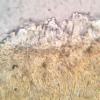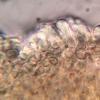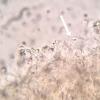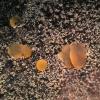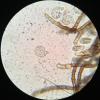
15-12-2025 07:09
 Danny Newman
Danny Newman
indet. Rutstroemiaceae sp. on unk. fallen leavesMc

15-12-2025 21:11
 Hardware Tony
Hardware Tony
Small clavate hairs, negative croziers and IKI bb

15-12-2025 15:54
 Johan Boonefaes
Johan Boonefaes
Unknown anamorph found on the ground in coastal sa

15-12-2025 15:48
 Danny Newman
Danny Newman
Melanospora cf. lagenaria on old, rotting, fallen

15-12-2025 07:05
 Danny Newman
Danny Newman
Pseudosclerococcum golindoi (det: Zotto)near Cosb

15-12-2025 11:49
 Danny Newman
Danny Newman
ITS sequences from the following two collections B

15-12-2025 12:34
 Danny Newman
Danny Newman
indet. Rhytismataceae on oak leafnear Purchase Roa

09-12-2025 12:06
 Andgelo Mombert
Andgelo Mombert
Bonjour,Je recherche l'article concernant Hypobryo
Orbilia
Ethan Crenson,
08-04-2022 22:29
Hello,
I recently found this orange Orbilia on hardwood in New York City. Unfortunately, I don't have the collection anymore so I hope this will be enough.
Asci truncate at the apex, 35-42 x 3.4-4.7µm
Spores slightly helicoid, blunt at one end, acute at the other, small globose spore body at the blunt end, 6.2-9.7 x 1.4-2.0 µm
Paraphyses swollen at the apex ~3.3-5.9, with exudate on the tops that can be 2.2µm thick.
Again, I hope that's enough at least to get the options down to a few possibilities.
Thanks,
Ethan
Piotr Perz,
08-04-2022 23:00
Re : Orbilia
O. comma?
Ethan Crenson,
08-04-2022 23:10
Re : Orbilia
Piotr,
I see the resemblance, but isn't that species European only, and mostly in the UK to boot?
Ethan
Viktorie Halasu,
09-04-2022 11:10

Re : Orbilia
Dear Ethan,
do you have any other photos where the margin would be better visible? On the second photo are some lighter areas which I'm tempted to interpret as glassy processes on the margin. So I wonder if it might be (related to) the american O. regalis.
Viktorie
do you have any other photos where the margin would be better visible? On the second photo are some lighter areas which I'm tempted to interpret as glassy processes on the margin. So I wonder if it might be (related to) the american O. regalis.
Viktorie
Hans-Otto Baral,
09-04-2022 13:38

Re : Orbilia
Yes Viktorie, this is my idea as well. The paraphyses have an ellipsoid, almost spathulate apex capped by exudate, and the spores look very much like O. regalis, which is only known in the dead state. What a pity that the sample got lost. The margin does not look much crenulate, but possibly it had short glassy processes.
Ethan Crenson,
11-04-2022 20:57
Re : Orbilia
Oh, this is very frustrating. I will have to return to the collection site later this week. In the meantime here are some closeups of the in situ photos. I would not say that the margin is crenulate, but there is a sharp, whitish edge. I have also added more microphotos cropped to the area where, I think, Victorie saw what could be the glassy processes.
Ethan
Hans-Otto Baral,
11-04-2022 21:50

Re : Orbilia
o.k., yes, these might be glassy processes. Would indeed be important to succeed with a further collection.
Ethan Crenson,
15-04-2022 05:13
Re : Orbilia
I have found the same Orbilia again. It was not in my original collection location, but in a park in the Bronx about 15 miles from the first location. It's on what I believe to be oak bark this time. The mature apothecia lack any crenulate margin or glassy processes as far as I can tell. The first three photos are all from the large fruiting body and you can see that the spores are slightly helicoid with what may be the SBs near the rounded end.
But, the smaller, less mature apothecia are distinctly crenulate. (The rest of the photos depict the smaller fruiting body pictured 4th.) Glassy processes? What do you think? I wanted to make sure this collection was not a mix of different species. The last photo shows spores inside an ascus of the small fruiting body. I didn't find any free spores, but the spores in ascus look the same.
I can take a closer look tomorrow if need be.
Ethan
Ethan Crenson,
15-04-2022 18:03
Hans-Otto Baral,
15-04-2022 20:09

Re : Orbilia
Something like Helminthosporium - impossible as Orbilia anamorph.
This find is actually the same. Perfect for the glassy processes.
Now I do not know if the sample by Igor Khomenko On a bark from hardwood from 6.XII.2020 is the same or not.
